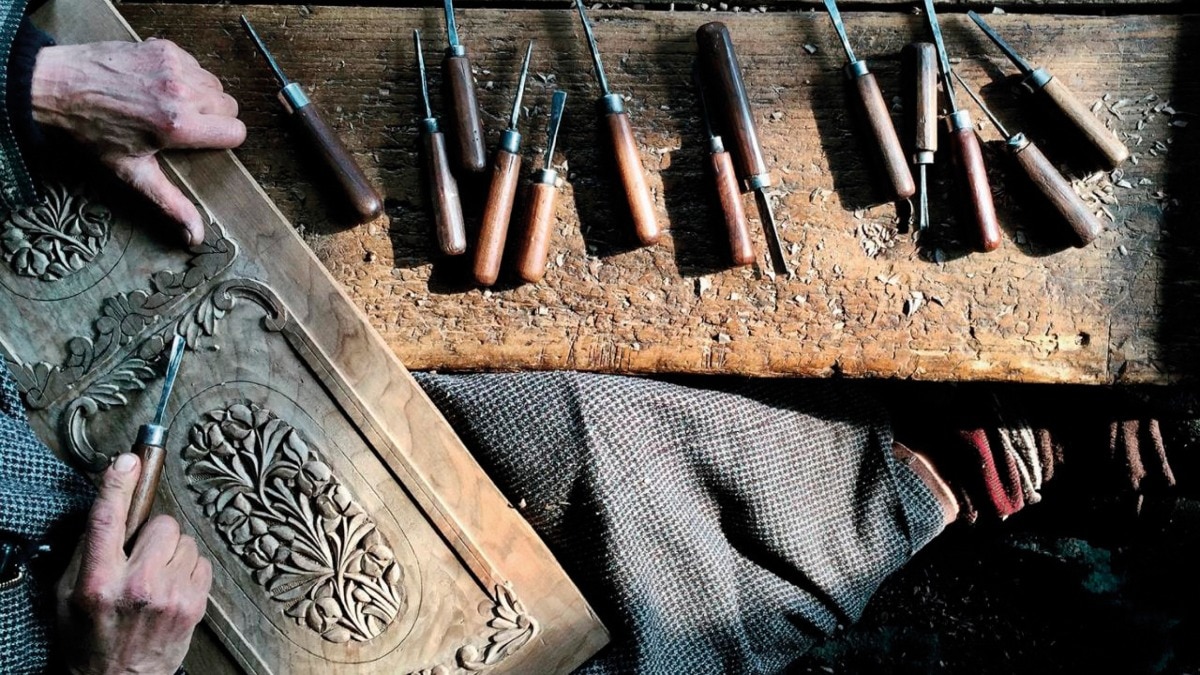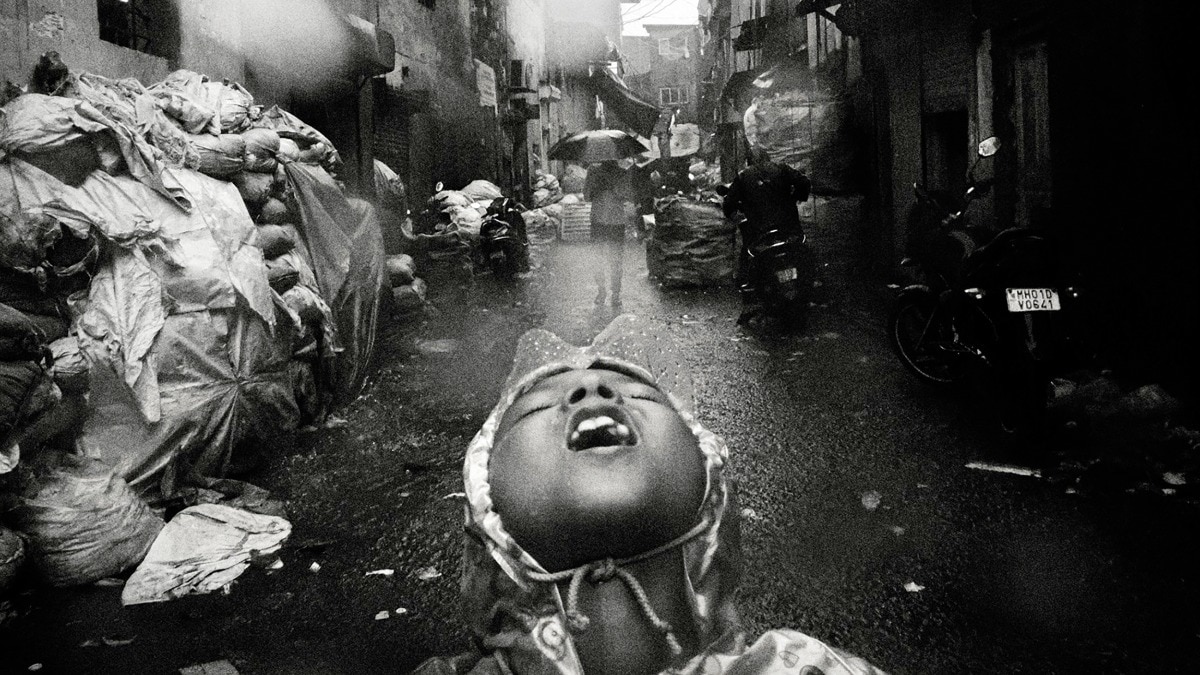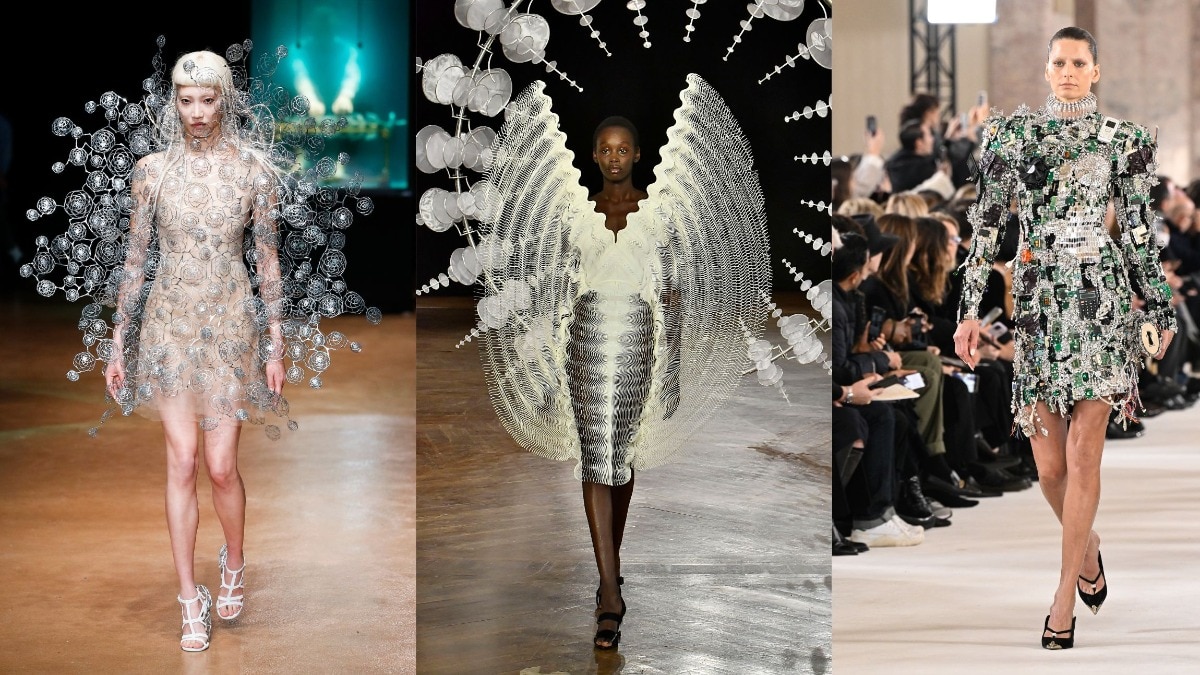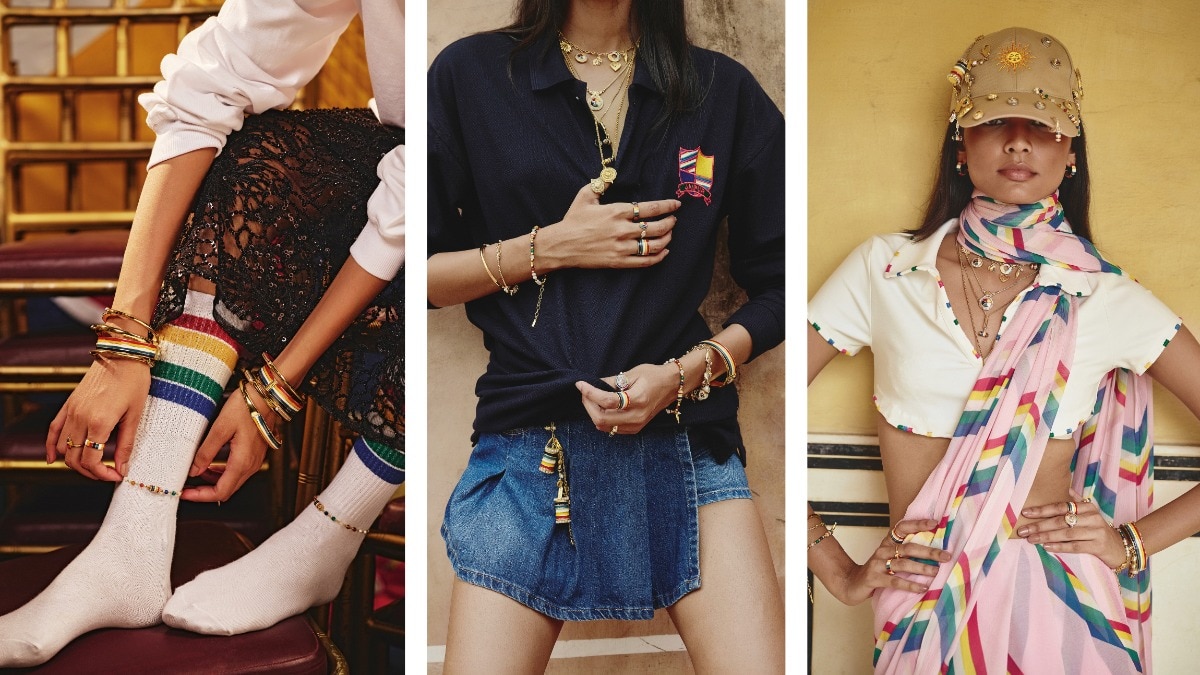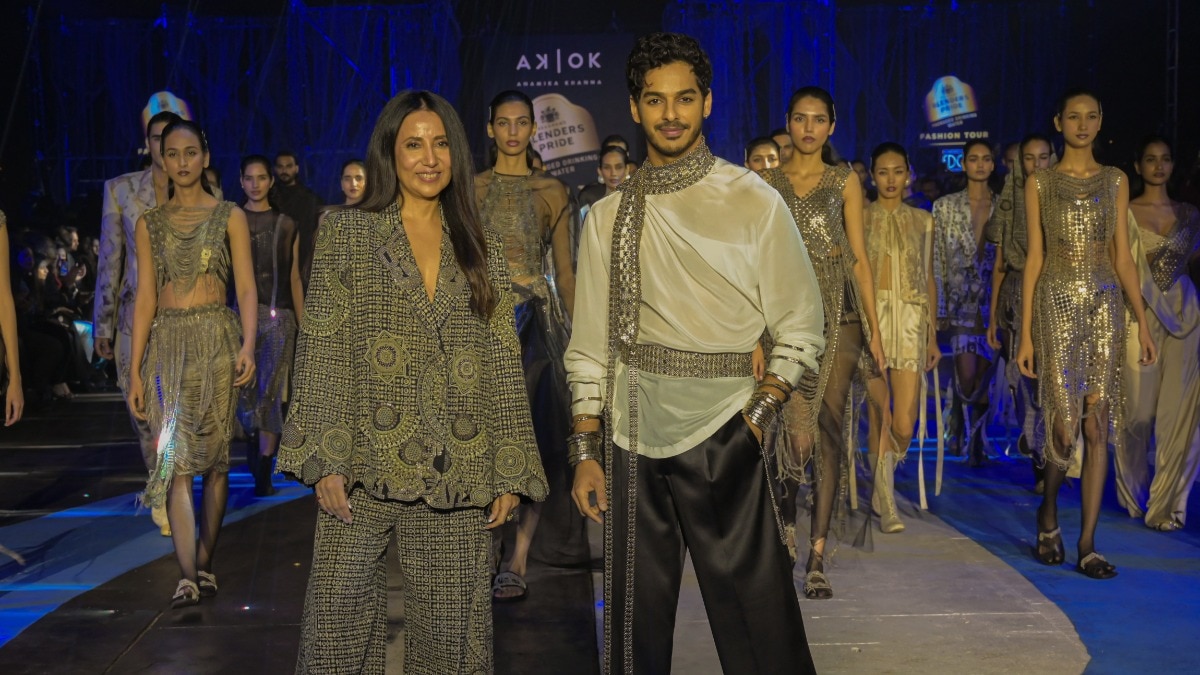A charged history of feminist art in India
The Indian-born American artist charts the feminist art movement in the country and every female painter that influenced her socio-political, feminist work today.


It is a mighty endeavour to write a succinct article on the arc of the feminist art movement in India, yet it is one that I am determined to undertake.
Feminist art in India has had a unique trajectory, influenced by indigenous women’s movements from the 1800s onwards, and the evolution of male-dominated art movements in India that tussled with colonial influence and nationalist movements. I would contend that the distinct constructs of socio-political, religious, and caste structures of the Indian cultural milieu of pre-colonial, colonial, and post-colonial India gave rise to distinct indigenous forms of plural feminism in the country. Therefore, the evolution of feminist art in India needs to be contextualised in the registers of the women’s movement—from pre-colonial, to colonial, and post-colonial times—and the male-dominated art history canon.
I personally think of feminism as a system of thought that seeks equal rights, power, and opportunities for everybody, irrespective of gender, sexuality, class, caste, religion, race, color, location, education, language, heritage, physical ability, and age. Feminist art centers around women's perspectives, their interior lives, and address female and male viewers. Feminist artworks are not merely objects for aesthetic admiration, they often incite the viewer to question the social and political status quo, and to create social change towards more equality. Since feminist art influences cultural attitudes and transforms stereotypes, it has become a significant site of feminist resistance.
Colonial period (early 1800s to 1920s)
The early 1800s were a heady time of social reform movements to ban the practice of sati or widow immolation, legalize widow remarriage, ban polygamy, raise the age of consent for girls, and improve women’s access to education, work, and healthcare. Gandhi’s Satyagraha movement drew women out into the public space in the thousands as active participants in the independence movement. Women gained the right to vote in state elections and run for political office, and Dalit women boldly agitated against caste-based discrimination.
The Bengal School was founded in an atmosphere of nationalistic fervor with a revivalist agenda, aligned with the Swadeshi movement; it rejected the aesthetic sensibilities of European academic painting and created an authentically Indian aesthetic framework for art-making. It embraced watercolour and wash techniques on paper, as a counterpoint to European oil painting on canvas.

We know the names of only a few women artists from this time period such as Mangala Bai Thampuratti, Sunayani Devi, Ambika Dhurandhar, and Pratima Devi—proto-feminists who centered women as subjects.
Modernism and feminist art
And then came Amrita Sher-gil, who firelit the feminist art movement in India and jolted the male artists into modernism. A prodigious artist of mixed Hungarian Sikh heritage, and trained in the Ecole Des Beaux Arts in Paris, her unabashed self-portraits and sensitive portrayals of women in female homosocial spaces revolutionised art aesthetics and proved that women artists are a force to reckon with. She made her most impactful works in the 1930s, however she died prematurely in 1941 at the age of 28.

Modernism in Indian art occurred in three phases—early Modernism (1930s - late 1940s) started by Sher-gil, then middle Modernism (late 1940s - late 1960s), and late Modernism (1970s - 1980s). While the Progressive Artists' Group in then-Bombay, the Kerala Radicals, and the artists at Cholamandal Artists’ Village had very few women artist members, women were enrolling in art schools, leading to the professionalization of the arts as a viable career for women. In the two decades after independence, laws were made to ban dowry and dowry deaths, domestic violence, and custodial rape.
Several women artists who rose to national and international prominence in early and middle modernism are, Leela Mukherjee, Pilloo R. Pochkhanawala, Meera Mukherjee, Lalitha Lajmi, Y. G. Srimati, B. Prabha, Devyani Krishna, Prafulla Dahanukar, Bhanu Athaiya, Anila Jacob, Arnawaz Vasudev, Homai Vyarawalla, Dayanita Singh, Atasi Barua, Kavita Deuskar, Rani Pooviah Nanjappa, T. K. Padmini, Padma Reddy, Amina Ahmed Kar, Naina Dalal, and Meher Afroze.
Late modernism (1970s to 1980s)
In the 1970s, there was a massive political mobilisation of women’s movement across India, that included the Chipko and SEWA movements. Many high-profile cases of rapes and dowry deaths around the country led the creation of better laws to ban dowry and prosecute dowry-related deaths, domestic violence, and rape. Phoolan Devi caught the national imagination as a Dalit heroine who took up arms against sexual violence and caste-class oppression.
Many women joined the arts ecosystem as curators, critics, and writers, producing a comprehensive body of knowledge, critical writing, and research-based curation, which helped evolve the feminist art movement to the next level. Gayatri Sinha, Geeta Kapur, Tapti Guha-Thakurta, Vidya Dehejia, Roobina Karode, Pooja Sood, and Vidya Shivadas were some of them. This vibrant field of feminist art critique led to the study of women’s role in the arts and became a catalyst for a major reassessment of Indian women artists.

Two significant exhibitions in the 1980s catapulted feminist art. Through the Looking Glass was a travelling exhibition of watercolours by four women artists: Nalini Malani, Nilima Sheikh, Madhvi Parekh, and Arpita Singh, from 1987 to 1989. The watercolour format not only facilitated the easy transport of the works but also signaled a rupture with the dominance and prestige of the oil-on-canvas tradition, associated with male artists of early and middle modernism.
In 1986, the National Gallery of Modern Art (NGMA) in New Delhi, organised an exhibition titled Contemporary Indian Women Artists, which put several women artists and their works on the map, such as Arpita Caur, Pushpamala N., Nasreen Mohammedi, Zarina Hashmi, Anita Dube, Anjolie Ela Menon, Rekha Rodwittiya, Rini Dhumal, Shobha Broota, Gogi Saroj Pal, Rummana Hussain, Arpana Caur, Sheela Gowda, Anupam Sud, Prabhavati Meppayil, Mrinalini Mukherjee, Jayasri Burman, Sheba Chhachhi, Shakuntala Kulkarni, Ratnabali Kant, and Navjot Altaf.

Post-modernism (1990s to early 2000s)
By the 1990s, intersectional feminism was the name of the game, with the emergence of ecofeminism, Dalit feminism, Muslim feminism, Kashmiri feminism, feminism in the Northeast, queer feminism, and transnational or global feminism. Women’s studies departments were established in many universities and colleges, resulting in formal education of women’s rights for the new generations of millennial Indians.

The 1990s and early 2000s was a golden period for feminist art; women artists were well-established in the arts field, showing regularly in biennales and museums, financially successful, and making activist works that questioned and protested complex socio-political issues from an intersectional perspective. The next generation of feminist art curators, critics, writers, collectors, and gallerists include Kiran Nadar, Feroze Gujral, Bhavna Kakar, Arshiya Lokhandwale, Nancy Adajania, Akansha Rastogi, Deeksha Nath, Veeranganakumari Solanki, Natasha Jinwalla, Gitanjali Dang, Amrita Jhaveri, Aparajita Jain, Farah Siddiqui Khan, Hena Kapadia, Priyanka Raja, Roshini Vadehra, Anahita Taneja, Jagdip Jagpal, and Sree Banerjee Goswami to count a few.

Contemporary period (2010 to present)
This fourth phase of women’s movements saw the rise of cyberfeminism, the Nirbhaya movement, and the #MeTooIndia movement. Widespread use of social media and digital platforms collapsed national boundaries. Communal violence such as the insurgency in Kashmir, demolition of the Babri Mosque, the Bombay riots, and the Gujarat Pogrom, have radicalised a generation of women artists.

Contemporary feminist artists include Shilpa Gupta, Bharti Kher, Tejal Shah, Zanaan Wanaan, Jayashree Chakravarty, Sumakshi Singh, Ayisha Abraham, Mithu Sen, Reena Saini Kallat, Gauri Gill, Jasmeen Patheja, Jaya Daronde, Rajyashri Goody, Malvika Raj, and Rajyashri Goody are critiquing the skewed power dynamics of the Hindu right ideology, gender, caste and class barriers, religious differences, LGBTQ discrimination, and repressive state apparatuses. Madhubani painters such as Sita Devi, Mahasundari Devi, Mahalaxmi Karn, and Ganga Devi have created a feminist renaissance in folk art.
Women artists in South Asian diasporas in USA, Britain, and Canada are developing transnational feminist art. Artists such as, Sutapa Biswas, Chila Kumari Burman, Samena Rana, Tara Sabharwal, Jaishri Abichandani, Swati Khurana, Chitra Ganesh, Prerana Reddy, Yamini Nayar, Jasmine Wahi, Samanta Batra Mehta, Nandini Chirimar, Pritika Chowdhry, Indrani Nayar Gall, Pallavi Sharma, Annu Palakunnathu Matthew, Rina Banerjee, Nirmal Raja, and Indira Freitas Johnson are combatting not only the patriarchal issues in their South Asian heritage, but also racial and geopolitical issues in the West.

As a post-colonial feminist diaspora artist, I am intimately familiar with the stakes of Indian feminist art. In this brief article I described in very broad strokes how feminist art evolved in tandem with women’s movements and art movements in India from pre-colonial, to colonial, and post-colonial times. I also named women artists, curators, and critics, since naming women is a feminist practice that prevents women’s contributions from getting erased. I stand with them in solidarity and gratitude. So many of these artists have influenced my own art practice and continue to do so.


